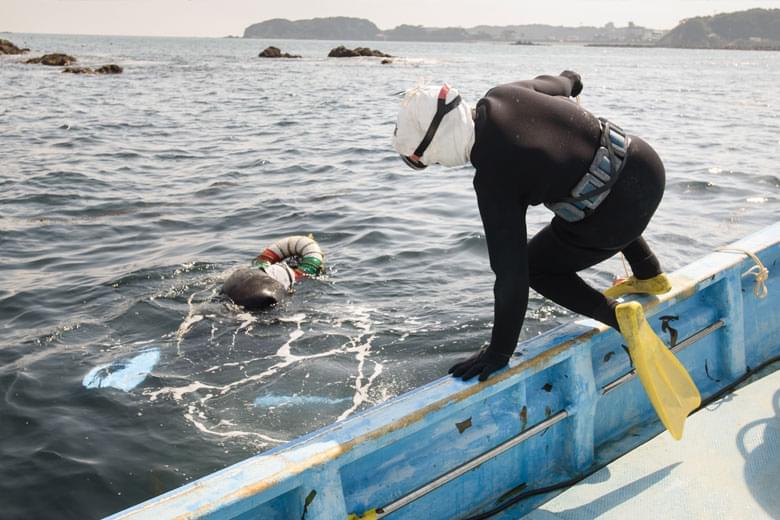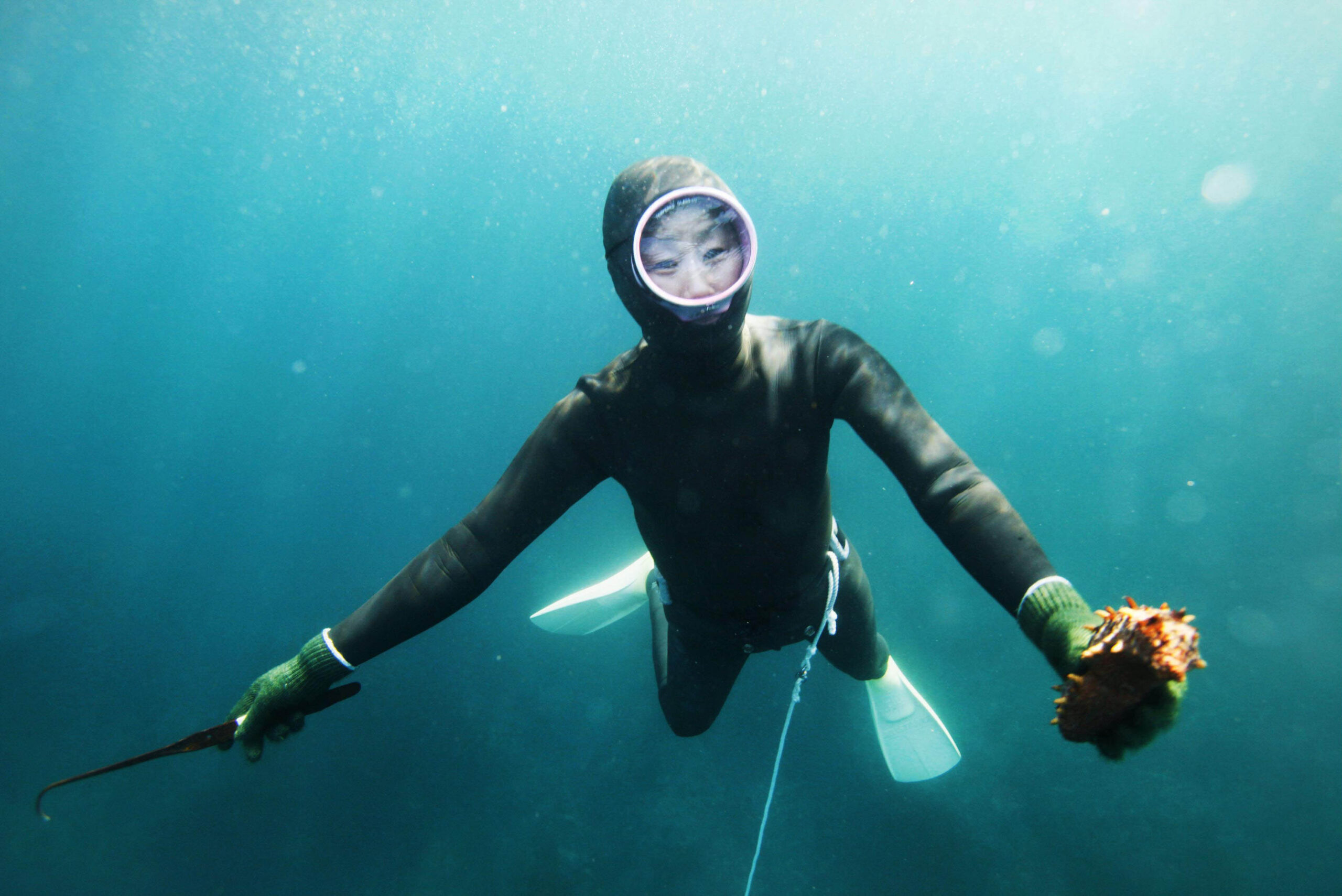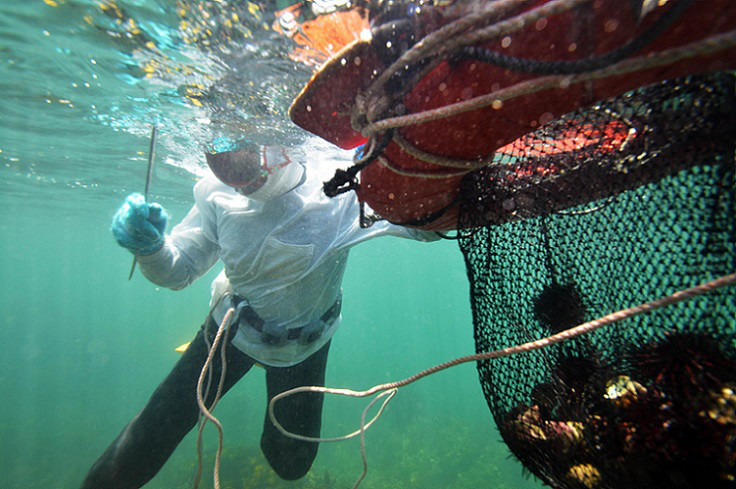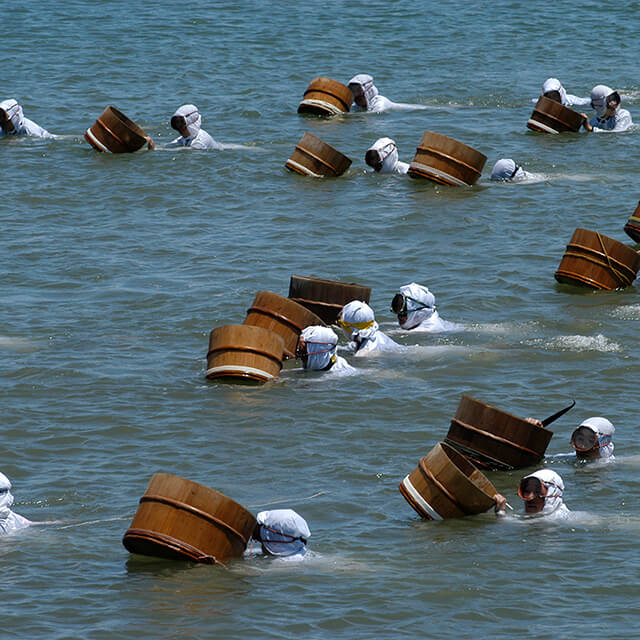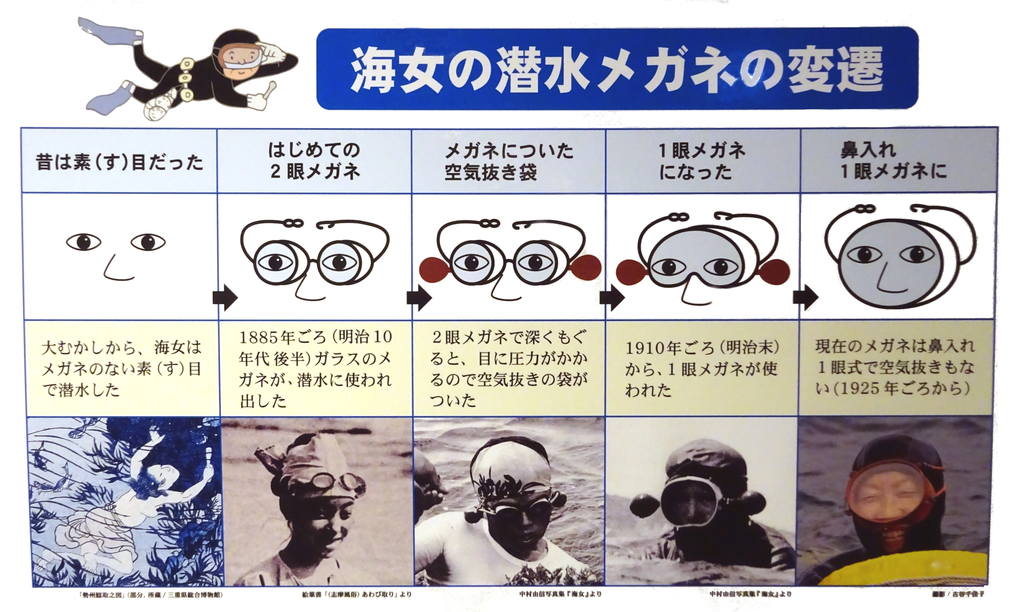The Ama Part 2
Japan's Professional Freedivers
Diving Technique & Gear
From a technical point of view, all ama divers work on breath-hold (apnea).
As documented in older material, early amas dived with no googles, then started using used low-volume diving goggles while freediving in the shallows.
These low-volume diving goggles, called mīkagan (ミーカガン) were developed in Okinawa in 1884 by Yasutarō Tamagusuku

Image source: Yoshinobu Nakamura 1962/63
Some of these goggles were fitted with pressure equalising mechanisms for use in deeper waters in the late 19th century, which recently became an inspiration for (high-tech) competitive freediving (no-limits) equipment.
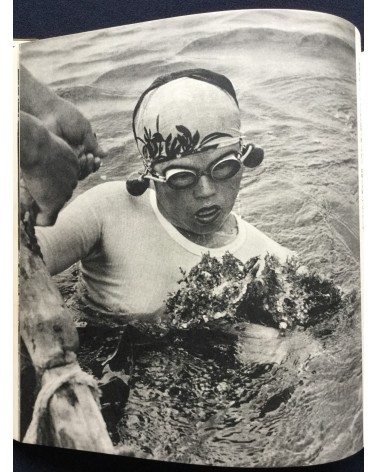
Image source: Yoshinobu Nakamura 1962/63
Image source: divingfan.net
The divers now use diving masks (some are antiques) the most common being round single-windowed models, with no nose-pocket.
Amas also now all use fins and wetsuits, but still work on breath-hold.
Image source: www.pref.mie.lg.jp

Image source: osatsu.org/
Historically, early divers, even female, wore only a loin-cloth (fundoshi) or simple wraparound waist-cloth and usually no top while working.
However, in the 20th century, the female divers adopted swimsuits, and an all-white diving uniform in order to be more modest while diving, reflecting a changing moral codes.
Image source: www.kankomie.or.jp
This was followed by the introduction of wetsuits in the 1960s onwards, which increased time it was possible to work comfortably in the sea (water temperatures drop to 10°C in winter in Mie Prefecture, for instance).
Most of the remaining modern amas now work in wetsuits, but some still choose to wear the traditional white garbs, especially in warmer weather, or for tourist or more ceremonial purposes.
Early amas used no mask, as seen on woodblock prints.
They then adopted goggles, first crude tortoise shell models then the Mīkagan type when these became largely available in the late 19th century.
Some adopted pressure equalising goggles, allowing for deeper dives, before switching to masks.
All amas now dive with a mask, usually a large single windowed, nose covering masks, but some use more modern models.
Amas do not use snorkels.
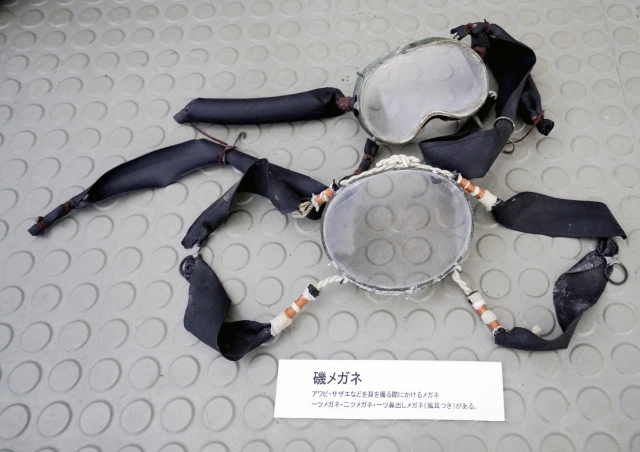
Ama diving masks, Chiba Prefecture – Image source: heritagedetection.wordpress.com
The image below, taken at the Toba Sea-Folk Museum, shows the evolution of underwater vision gear used by the ama, from googles to masks.
The second-last photo is interesting as, contrary to the illustration above, it actually shows a nose-encompassing mask fitted with pressure-equalisation bulbs, which is a little odd.
It’s difficult to see on the image but there seems to be a noce-clip-like device inside the mask, which might mean that the user was not able to equalise mask pressure by blowing into it, hence the bulbs…
Evolution of ama underwater vision equipement – Image source: www.diveoclock.com
Up to the mid-20th century ama divers also descended with no fins, but these were quickly adopted for confort, efficiency and safety.
For the freedivers reading these pages, the amas have no set breathe up pattern, but the final inhale, however, is mostly passive, with a small inhalation just before the dive, rather than a full breath.
Some amas even dive on an exhale in the shallows, a form of FRC diving, but most dive on inhales, especially for deeper dives.
They aim for relaxation during the dive, which makes sense, given their repetitive dives with short surface recovery times (60 seconds or so).
After a dive the amas, as well their haenyeo Korean counterparts, use a recovery breathing technique called isobue in Japanese (and sumbisori in Korean), which is a long and slow exhalation, with the upper lip drawn over the lower, creating a whistling sound (“sea whistle”).
This makes the diver’s presence known on the surface, and supposedly helps with recovery (perhaps purging the CO2 out on the exhale)
Isobue recovery breathing
All amas are said to equalise hands-free (without pinching the nose – the most commonly used masks don’t have nose pockets), using a form of Voluntary Tubal Opening (VTO), most using the soft palate / root of the tongue to push the air to the eustachian tubes and equalise.

Image source: https://english.kyodonews.net
The ama are organised along an age and rand based hierarchy. The most experienced divers dive from a boat (funado), down to depth of 25 meters max, using a 20kg weight for rapid descent and usually pulled back up using a rope.
Less experienced divers (oyogido) swim out to shallow areas close to shore, diving to a maximum depth of 10 to 15 meters.

Image source: Cathay Pacific
Working dive times are usually around 30 seconds to a minute.
You might read articles mentioning 3 minute dives, but anyone with some experience of dynamic apnea and/or spearfishing knows that this is highly unrealistic, especially in a cold-water, working environment with many repetitive dives…
Surface intervalls are quite short, usually 60 seconds or so.
As an example the current 300 meter dynamic with fins world is in the 3 minute zone (in a pool!), and William Trubridge’s 224 meter free-immersion record is in the 4 minute zone – and these are performances of highly trained and professional athletes, with efficient streamlined/movements not older women searching for shells in cold water, and prying them off the seabed and collecting them…)
Remarkably, many ama divers continue diving into their 80s, something which is also found in the Jeju’s haenyeo professional freedivers.
The divers organise multiple diving sessions during the day, staying up to a total of 6 hours in the water when weather permits, collecting shells or dislodging them away from the rocks or seafloor with prying tools.
The activity is dwindling away, with an aging, limited population, but has witness a recent regain of interest as tourism attraction and local cultural heritage, and has been subject of TV series and documentaries.
Image source: Award winning photo by Kaho Wong, 2017





